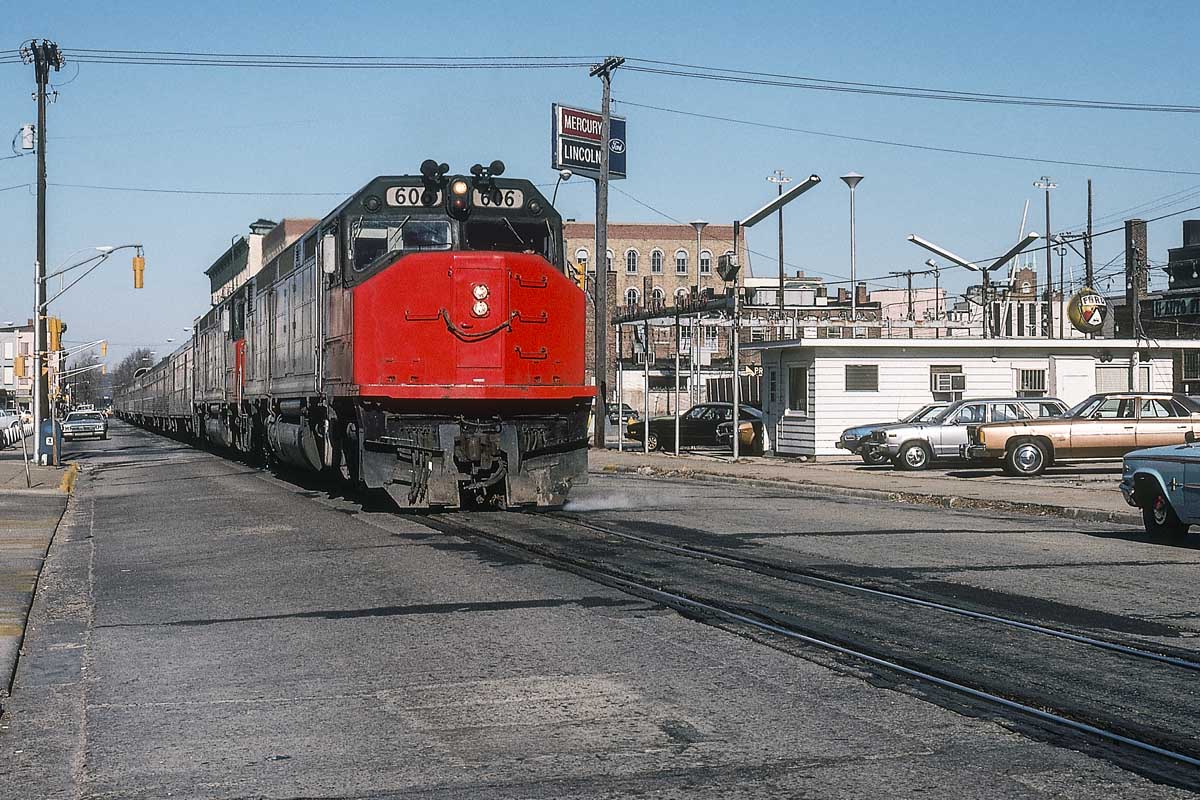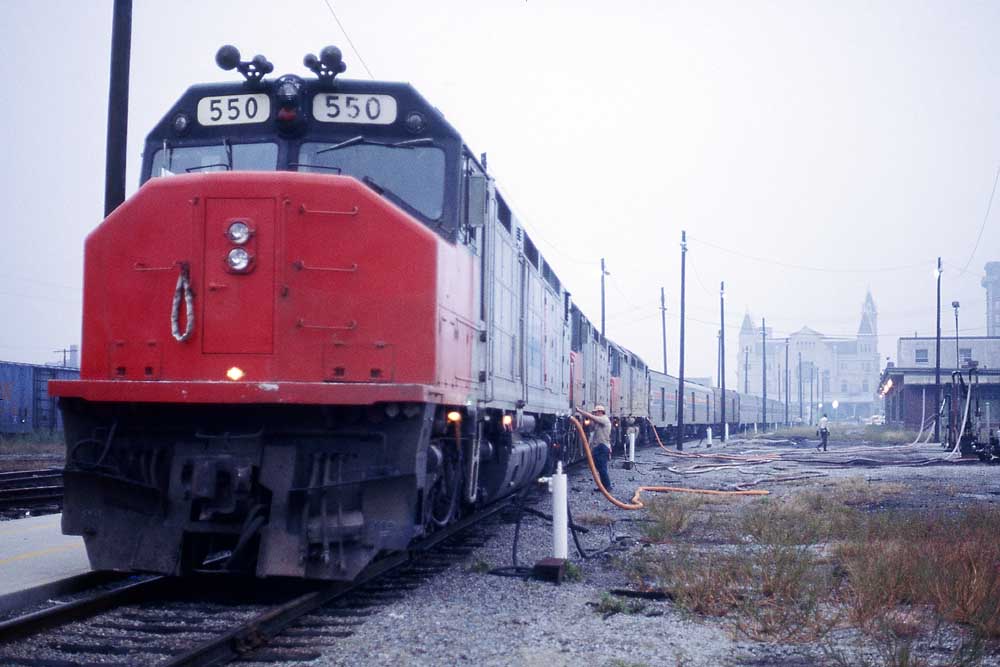Amtrak Floridian service provided direct service between Florida and the Midwest for almost a decade. The train was first known as the South Wind, a name inherited from predecessors Pennsylvania Railroad, Louisville & Nashville, and Seaboard Coast Line. With the issuance of Amtrak’s first in-house timetable on Nov. 14, 1971, the name was changed to Floridian.

The train provided the only Amtrak service to such cities as Louisville, Ky.; Nashville, Tenn.; and Montgomery, Ala., in its time.
Prior to Jan. 23, 1972, the train served Chicago’s Central Station on the lakefront, owing to its routing on the IC north of Kankakee. After that date, the train switched to a former Pennsylvania Railroad route via Logansport, Ind., and began serving Chicago Union Station with much of the rest of Amtrak’s fleet.
Due to the deteriorating condition of Penn Central’s track, the train saw various routings in Indiana that at times included PC, Louisville & Nashville (ex-Chicago & Eastern Illinois), and L&N (ex-Monon). On Aug. 1, 1974, the train moved to the L&N (ex-C&EI) via Evansville and Danville, Ill., bypassing both Louisville and Indianapolis. On April 27, 1975, it moved to the L&N (ex-Monon) via Lafayette, still bypassing Indianapolis. This would remain the Amtrak Floridianservice routing until the train came off in October 1979.
The track woes led to multiple schedule changes through the years. When Amtrak inherited the train, it operated on a two-day, one-night schedule. However, that would change to a two-night, one day schedule to better accommodate connections in Chicago.
At the Florida end, the train saw the operation of two sections, one to Tampa/St. Petersburg and the other to Miami. To access St. Petersburg, the train had to navigate street trackage at Clearwater. At various times in the 1970s, Amtrak Floridian service operated combined with the Silver Star south of Jacksonville.

One oddity in the train’s operation is its combination with the Auto-Train Corp. service to Louisville in November 1976. With it, the Floridian shifted its Louisville service to the Auto-Train’s facility there. The joint operation south of Louisville ended in September 1977. (Amtrak would later recycle the Floridian’s numbers, 52-53, for its own Auto Trainoperation between Lorton, Va., and Sanford, Fla., beginning in the 1980s.)
For its entire existence, the Floridian operated with steam-heated Amtrak heritage equipment. In the early years, power came from secondhand E units until Amtrak’s own problem-plagued EMD SDP40F diesels took over. Later operations saw use of new EMD F40PH diesel locomotives, but always with a steam-generator car or E unit for steam heat.














Chicago – Miami service restoration is considered by some to be the number one choice in the FRA route restoration study. Going via Atlanta makes it very appealing.
https://fralongdistancerailstudy.org/
i travelled on the floridian twice in the middle 1970’s from
the university of michigan (via chicago) to birmingham, alabama. by the first of these
trips, the schedule had already shifted to the two night/one day schedule.
i’d been warned of terrible timekeeping, shabby equipment and surly crews.
instead, i encountered an amazing variety of domes (all spotlessly clean inside
and out), very friendly, helpful employees and a dining car that served up one
of the best bacon and egg breakfasts i ever had. the first night we had rough
ride but following louisville the next morning, the track was smooth and fast.
we arrived in birmingham early, much to the surprise of my parents who’d come
from bessemer to pick me up.
the second trip a year later again featured multiple domes (two coaches and
a lounge) and a dome sleeper observation!
we left chicago late and a crew member walked through the train announcing
a 9pm “happy hour” which it seemed every passenger on board attended.
the next day – after another very bumpy night – we continued south on the
smooth l & n and arrived birmingham only minutes behind schedule.
i mention these two trips because, anecdotally, the floridian is often described as an unreliable, ragtag operation. undoubtedly, some of the time it must have been. but on my trips, it delivered a pleasant ride with a number of functional
feature cars. we’ve not only lost a valuable route on our national system but
one which, even with less-than-stellar equipment and indirect routing, provided
good service which people used. sometimes, a “bad” train is not so bad, after all.
I remember in pre-Amtrak days the Miami and St. Petersburg sections were tacked onto the Atlantic Coast Line’s East and West Coast Champions. The West Coast Champion further divided into several sections to various endpoints in Florida.